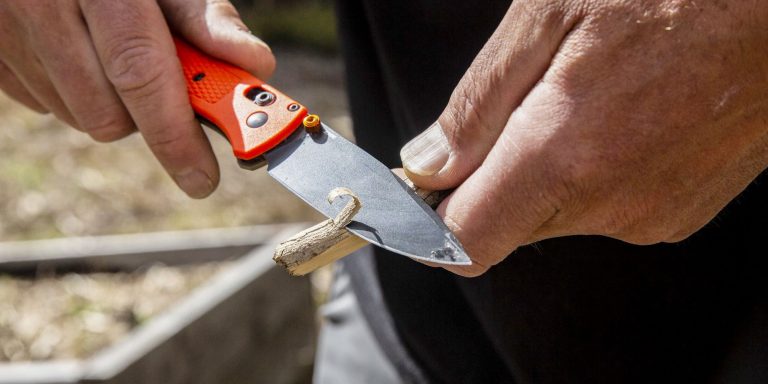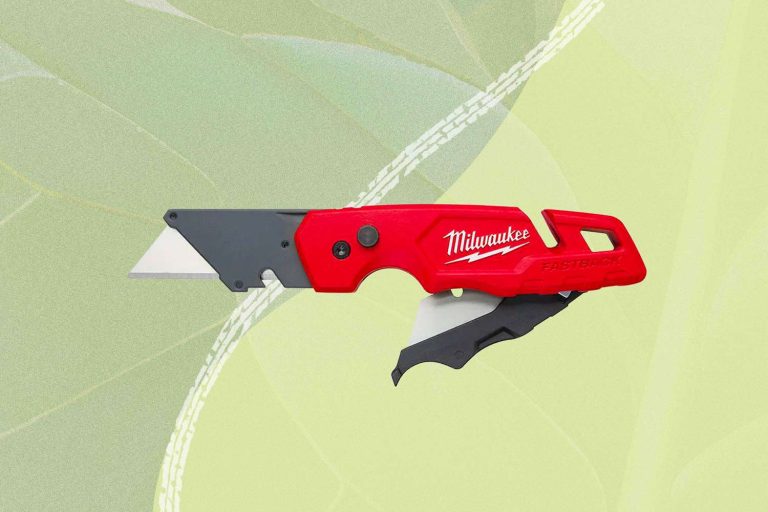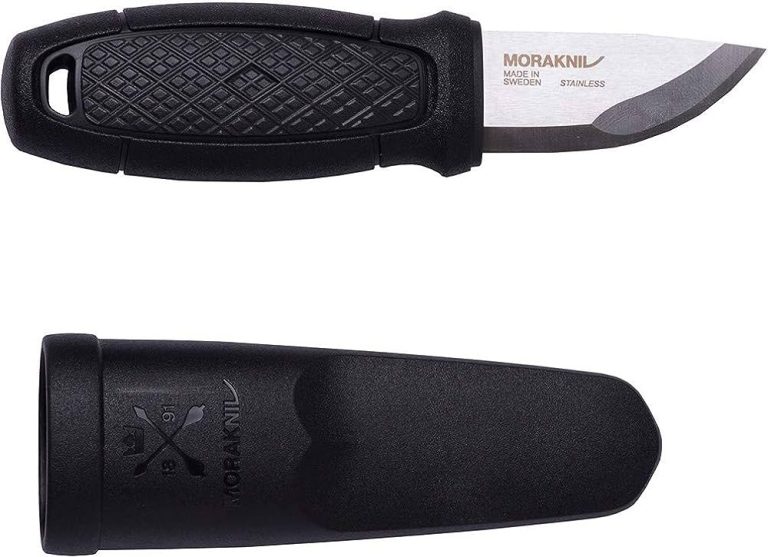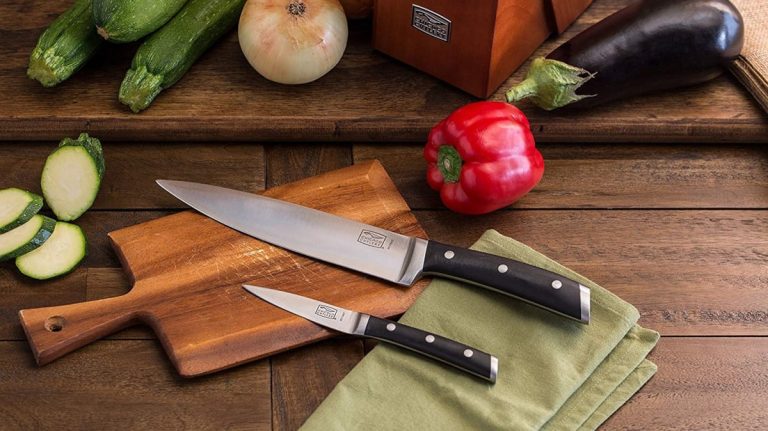Fishing Knife Materials And Construction
Fishing knife materials and construction play a crucial role in determining the knife’s durability and performance. The choice of materials and construction methods directly impact the knife’s strength, sharpness, and resistance to corrosion.
Types Of Fishing Knife Materials
The choice of material for a fishing knife is crucial to its performance and durability. There are several types of materials commonly used in the construction of fishing knives: stainless steel, carbon steel, and titanium.
Stainless Steel: Stainless steel is a popular choice for fishing knives due to its corrosion resistance and durability. It is easy to maintain and remains unaffected by saltwater exposure. Additionally, stainless steel blades retain their sharpness for a long time, ensuring smooth and efficient cutting.
Carbon Steel: Carbon steel blades are known for their exceptional sharpness and edge retention. They are easy to sharpen and provide an excellent cutting experience. However, carbon steel is prone to rust and requires regular maintenance to prevent corrosion, especially in saltwater environments.
Titanium: Titanium blades offer a unique combination of strength, durability, and lightweight design. They are resistant to corrosion, making them ideal for fishing in saltwater. Titanium knives are also non-magnetic, which is useful when dealing with electronic fishing equipment.
Pros And Cons Of Stainless Steel Fishing Knives
Stainless Steel Fishing Knives: Stainless steel fishing knives offer a range of advantages and disadvantages to consider. Durability and corrosion resistance are two of the most significant benefits. Stainless steel knives are highly durable, with the ability to withstand tough fishing conditions and remain sharp for extended periods. Additionally, they exhibit excellent corrosion resistance, making them suitable for use in saltwater environments. This characteristic contributes to their lower maintenance requirements, as they are less prone to rusting and staining compared to other knife materials. However, it is important to note that stainless steel knives can still potentially rust and stain if not properly cared for. Therefore, regular cleaning and maintenance are crucial to ensure their longevity and preserve their performance.
Advantages And Disadvantages Of Carbon Steel Fishing Knives
Fishing knives made from carbon steel have their advantages and disadvantages. One of the main advantages is their superior sharpness and edge retention. Carbon steel blades can be honed to a very fine edge, allowing for precise and clean cuts. Additionally, they can hold this sharpness for a longer period of time compared to other materials. However, carbon steel knives are more susceptible to rust and corrosion, especially when exposed to water and salt. To prevent this, regular maintenance and care are required, such as drying and oiling the blade after use. This ensures the longevity of the knife and preserves its sharpness. So, while carbon steel fishing knives offer excellent performance, they require a bit more attention to prevent rust and corrosion.
Benefits And Drawbacks Of Titanium Fishing Knives
Benefits and drawbacks of titanium fishing knives:
| Benefits | Drawbacks |
| Titanium fishing knives are lightweight, making them easier to handle and carry during fishing trips. | Titanium fishing knives tend to be more expensive compared to knives made of other materials. |
| Titanium is highly durable and can withstand harsh environmental conditions, ensuring the longevity of the knife. | There is limited availability and color options when it comes to titanium fishing knives. |
Titanium fishing knives offer the advantage of being lightweight and highly durable, which makes them a popular choice for anglers. Their lightweight construction makes it easier to handle the knife during fishing expeditions and reduces the strain on the user’s hand. Additionally, titanium is highly durable and can withstand harsh environmental conditions, ensuring that the knife remains in good condition for a long time. However, it’s important to note that titanium fishing knives can be more expensive compared to knives made of other materials. Moreover, there are limited availability and color options when it comes to titanium fishing knives. Despite these drawbacks, the benefits of lightweight and durability make titanium fishing knives a favorable choice for many anglers.
Factors To Consider In Fishing Knife Construction
Factors to Consider in Fishing Knife Construction
The design and shape of the blade are crucial factors to consider when choosing a fishing knife. A sharp and well-designed blade helps in efficient and precise cuts, enabling you to handle different tasks during your fishing trip. Look for blades made of high-quality stainless steel as they offer durability and corrosion resistance against the harsh marine environment. Additionally, consider the blade shape that suits your needs, such as a curved or straight edge.
The handle of a fishing knife plays a significant role in providing a comfortable and secure grip. Look for handles made of high-quality materials like rubber, textured plastic, or even wood. These materials provide excellent grip and control even when wet. Ergonomics is also essential to ensure the handle fits comfortably in your hand, providing a stable grip and reducing hand fatigue during long fishing sessions.
The tang, or the portion of the blade that extends into the handle, is another crucial aspect of fishing knife construction. Look for full tang knives as they provide superior strength and durability. A full tang ensures the blade is securely attached to the handle, reducing the risk of breakage. Partial tang knives may be more prone to snapping under pressure, compromising safety and functionality.
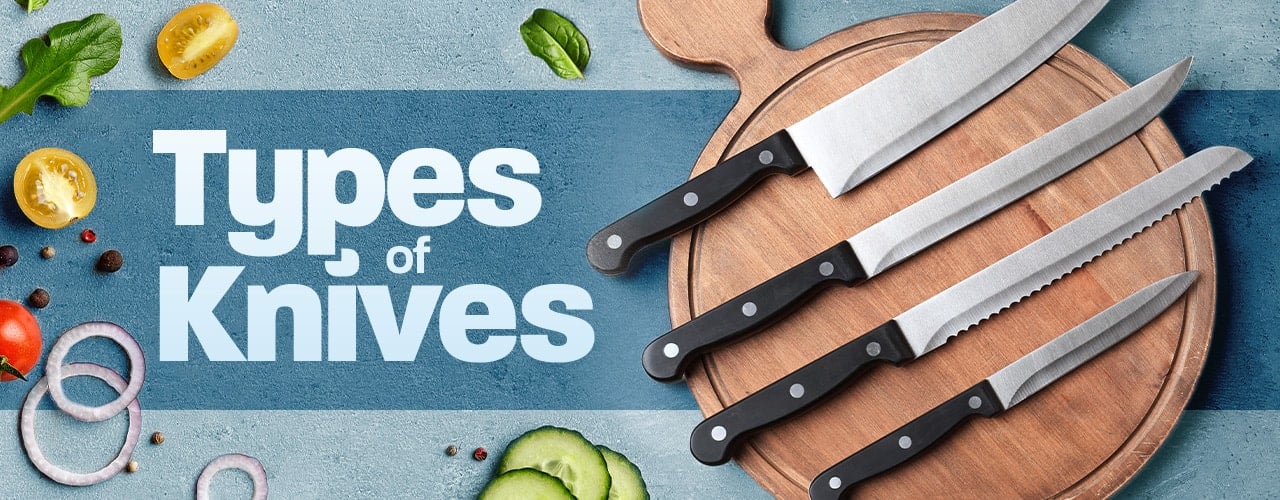
Credit: www.webstaurantstore.com
Importance Of Blade Design And Shape In Fishing Knives
The materials and construction of fishing knives play a vital role in their overall performance. For avid anglers, understanding the importance of blade design and shape is crucial in selecting the right knife for their fishing needs.
Straight blade: A straight blade is a common choice for many anglers as it offers versatility in various cutting tasks. It provides a clean and precise cut, making it ideal for tasks such as filleting fish or slicing lines.
Curved blade: On the other hand, a curved blade offers enhanced control and maneuverability. It allows for better leverage when working on larger fish or cutting through tough materials.
Serrated edge: Additionally, some fishing knives feature a serrated edge. This type of blade is highly efficient in cutting through tough scales and bones. It provides excellent grip and reduces slippage during use.
Choosing the right blade design and shape depends on individual preferences and the specific tasks at hand. By considering the advantages of each type, anglers can make informed decisions to ensure they have the best fishing knife for their needs.
Impact Of Handle Materials And Ergonomics On Fishing Knife Performance
Fishing Knife Materials and Construction
Impact of Handle Materials and Ergonomics on Fishing Knife Performance
One important consideration when choosing a fishing knife is the handle material as it can greatly influence the knife’s performance. Rubber or polymer handles offer excellent gripping comfort and slip resistance. These handles are designed to provide a secure grip even in wet conditions, ensuring safe and efficient knife handling. Wood handles, on the other hand, offer a traditional and aesthetic appeal. However, they may lack the same level of slip resistance as rubber or polymer handles, especially when wet. It’s important to consider the conditions you’ll be fishing in and the level of gripping comfort you desire when selecting the handle material for your fishing knife.
Different Types Of Tang Construction In Fishing Knives
Fishing knives are essential tools for anglers, and understanding the different types of tang construction is crucial when choosing the right knife for your needs. Two common types of tang construction in fishing knives are full tang and partial tang.
Full tang knives have a blade that extends through the handle, providing strength and durability. This construction allows for a solid grip and reduces the risk of the blade breaking or separating from the handle during use.
Partial tang knives, on the other hand, have a blade that does not extend fully through the handle. While they may be lighter and more affordable, they may not offer the same level of strength and stability as full tang knives.
In addition to full tang and partial tang, there is another type of tang construction known as rat-tail tang.
Rat-tail tang is a thin and narrow extension of the blade that runs through the handle. While this construction is commonly found in cheaper knives, it is not recommended for heavy-duty tasks or fishing activities that require a strong and reliable blade.
When selecting a fishing knife, it is important to consider the type of tang construction that best suits your needs. Full tang knives generally offer superior strength and durability, making them ideal for anglers who require a sturdy and reliable tool.
Choosing The Right Fishing Knife Material And Construction
In order to choose the right fishing knife material and construction, it is important to consider the fishing conditions and environment in which you will be using the knife. Different fishing situations require different knife materials and features to ensure optimal performance.
Additionally, evaluating your personal preferences and budget is essential when making a decision. Some anglers prefer stainless steel blades for their corrosion resistance and durability, while others prioritize lightweight options like titanium or carbon fiber for ease of use. Considering your budget will help you find a knife that meets your requirements without breaking the bank.
Seeking advice from experienced anglers is highly recommended. They can provide valuable insights and recommendations based on their own fishing experiences. Their expertise can help you identify key features to look for in a fishing knife and guide you towards the best options available.
Matching Fishing Knife Materials To Fishing Conditions
table, th, td { border: 1px solid black; border-collapse: collapse; } th, td { padding: 15px; text-align: left; }When selecting a fishing knife, it is crucial to consider the fishing conditions you will be encountering. Different materials offer varying levels of durability, corrosion resistance, and performance. Let’s explore the best knife materials for different fishing environments:
| Fishing Conditions | Recommended Materials |
|---|---|
| Saltwater fishing | Stainless steel, titanium |
| Freshwater fishing | Carbon steel, stainless steel |
| Tough and rugged environments | High-carbon stainless steel, titanium |
Saltwater fishing poses unique challenges due to the corrosive nature of saltwater. For saltwater fishing, opt for knives made from **stainless steel** or **titanium**. These materials are highly resistant to corrosion, ensuring your knife remains in optimal condition.
Freshwater fishing conditions are less harsh, but still require a reliable and corrosion-resistant knife. Materials such as **carbon steel** and **stainless steel** are excellent choices due to their durability and ability to resist rust.
For tough and rugged environments, where you may encounter challenging fishing conditions, knives made from **high-carbon stainless steel** or **titanium** are recommended. These materials offer exceptional strength and durability, ensuring your knife performs reliably.
Evaluating Personal Preferences And Budget For Fishing Knife Selection
Choosing the right fishing knife involves considering personal preferences and budget constraints. Blade sharpness and maintenance requirements are important factors to evaluate. A sharp blade ensures efficient cutting and reduces the need for frequent sharpening. Handle comfort and grip are crucial for a secure and comfortable hold, especially during slippery and wet fishing conditions. It is essential to find a fishing knife that fits comfortably in your hand and provides a firm grip. Price range is another consideration, as it determines the long-term investment. While higher-end knives often offer better quality and durability, they may not be ideal for everyone’s budget. By carefully weighing these factors, you can choose the fishing knife that best suits your needs and preferences while staying within your budget.
Seeking Advice From Experienced Anglers For Fishing Knife Recommendations
Online fishing communities and forums can be a valuable resource for seeking advice and recommendations on fishing knife materials and construction. Engaging with experienced anglers in these communities allows you to tap into a wealth of knowledge and firsthand experiences. Members often discuss the best knife materials, designs, and features that are suitable for different fishing scenarios.Similarly, local fishing stores and experts are another excellent source of information. They have firsthand experience with various fishing knife brands and models and can provide valuable insights into their performance and durability. They can also offer personalized recommendations based on your specific fishing preferences and needs.In addition, personal recommendations and reviews from fellow anglers are highly valuable. Listening to the experiences of others who have used different fishing knives can help you make an informed decision. Personal recommendations often come with detailed insights into the knife’s functionality, ergonomics, and overall performance, aiding in your decision-making process.Considering the advice from experienced anglers through online fishing communities, consulting local experts, and seeking personal recommendations and reviews are effective ways to make an informed choice when it comes to selecting a fishing knife with the ideal materials and construction.
Conclusion
To sum up, selecting the right fishing knife material and construction is crucial for a successful fishing trip. Stainless steel blades offer excellent corrosion resistance and durability, making them a popular choice among anglers. Titanium blades, although a bit pricier, provide superior strength and lightweight properties, ensuring a precise and comfortable cutting experience.
The construction of the knife should be sturdy and well-balanced, ensuring a good grip and control. A full tang design is ideal as it provides maximum strength and durability. Additionally, considering features like blade length, edge type, and handle material is essential for a personalized fishing knife experience.
Whether you’re a professional angler or a weekend warrior, a high-quality fishing knife is an indispensable tool that will enhance your fishing adventures. So, invest wisely and enjoy reeling in those trophy catches with confidence!

